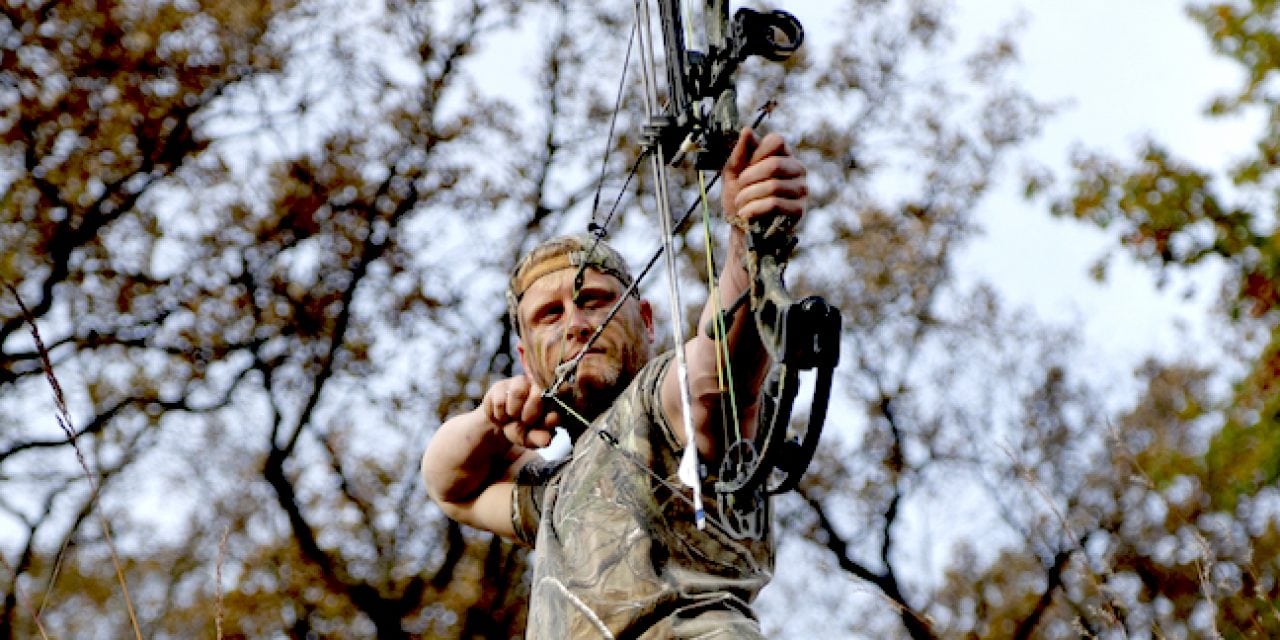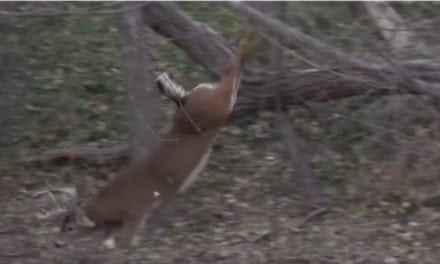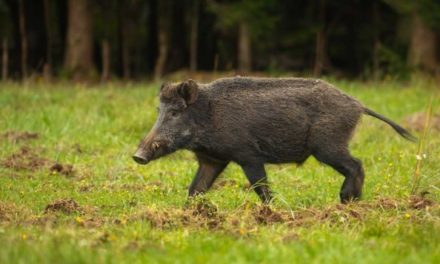Last year was a good one for Arkansas bowhunting. Will this season be even better?
By Clay Newcomb
Though the temperatures were high, September couldn’t hide the nuances of the coming Arkansas fall. The shadows of the trees were starting to look different and the sun was rising a bit farther toward the southeast each day. It was almost deer season in The Natural State.
I was riding my mule up the north side of a big Ozark hollow when I first laid eyes on the buck. Based upon his thick chest, short-looking legs, and the mass he carried in his antlers, I immediately knew he was mature. I was pretty sure I counted 5 points on one side and I could have sworn a tuft of green moss grew on the north side of his rack — at least while he was running west.
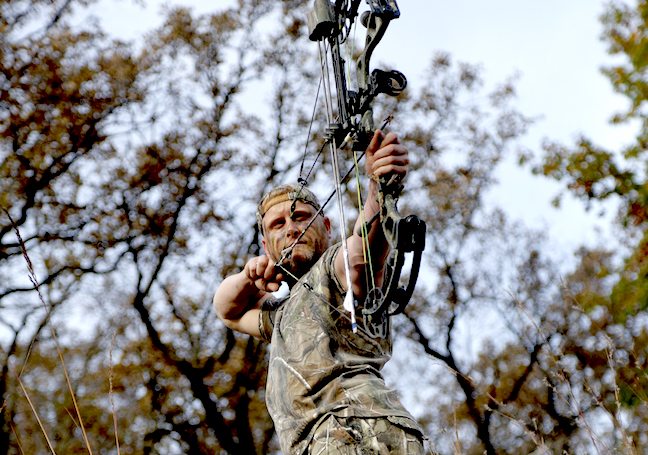
The Arkansas archery season opens on Saturday, Sept. 23. (Shutterstock image)
The buck was hanging out in an area where I had a lot of experience in predicting the patterns of deer. Based upon where I jumped him and his seemingly laissez-faire attitude, I thought I could kill this deer, but I didn’t know how easy it would be. I would find out soon enough.
Many Arkansas hunters wait until the rut, when buck patterns are erratic at best, to start hunting. Yes, hunting the rut is traditionally the prime time for buck hunting, but that doesn’t necessarily mean it’s the most effective time to kill a mature deer. The early season can be the time to catch a mature buck on a feeding pattern.
I won’t lie: it’s not always this easy, but sometimes it is. Arkansas has a wide temperature range and a lot of diverse habitat, making early hunting different in every corner. However, the early season can bring some of our best hunting. Bucks are bucks no matter where they live, and during the early season they’re focused on eating.
The key is finding the bucks that are easy to pattern. In my experience, some are and some aren’t; find the ones that are to be successful in the early season. You might find them feeding on soybeans, in a clover food plot, at the edge of a cattle pasture, coming to supplemental feed, or using an acorn-laden bench in the mountains. Just know that the bucks are feeding somewhere, and they are probably doing the same things almost every day in the early season.
In the locale where this deer was living, I had one location where I felt I could kill him. The stand had hung in this tree for a few years and I’d grunted in a big 8-point from it the year before, but had let him slip through my fingers. The same year my daughter had killed two does with her muzzleloader while sitting at the base of the tree.
It was a neck of timber about 50 yards wide between two grownup fields. To the west, the bottleneck was connected to a vast hardwood block covering hundreds of acres. To the east it connected to a labyrinth of cattle pastures and subdivisions. To sweeten the deal, because it was private land, I was putting out some supplemental feed to add greater attraction to the already-used travel area. I didn’t know if the buck would be easy or hard, but I had to try.
Though the Arkansas archery season opened on Sept. 24, I didn’t hunt the buck until Oct. 9. I needed a south wind and I wouldn’t risk hunting with any other wind. In a very unusual weather pattern, the wind blew out of the north for the first two weeks of the season. Even though I knew the buck was coming through the bottleneck almost every day, I couldn’t and wouldn’t hunt him.
In excitement for the early season it’s easy to get overzealous and hunt a stand when conditions aren’t perfect. If there is one thing I’ve learned about hunting the early season it’s this: Your biggest ally is the element of surprise. You’ve got make your first hunt count and the buck can’t know you’re there.
On Oct. 9, the wind shifted out of the south. I quickly made arrangements to hunt. I was looking for a way to spice up my deer hunting, so I decided to carry my TimberGhost recurve bow. I had killed deer with it before, but never a mature buck.
To make a long story short, this buck exemplified what early season whitetail dreams are made of. The buck was extremely patternable and acted like he didn’t have a care in the world. I was capturing trail camera pictures of him in the daylight on regular intervals.
I ended up killing the buck within two hours of my first sit of the year in the stand. Again, not every buck is that easy to pattern, but if you stay after them in the early season you can run into a mature buck that makes it look easy.
The buck field dressed 170 pounds, which is big for the Ozark Mountains. The buck likely weighed more than 200 pounds on the hoof. For Washington County, that’s a big-bodied buck. His rack was handsome and scored in the low 120s. For my first recurve buck, I was very happy.
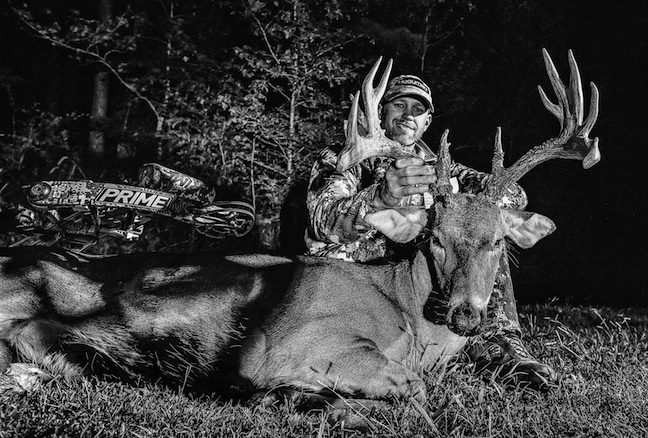
Brandon Hunt killed this great archery buck on Sept. 28, 2016, in Pope County over a food source. (Photo courtesy of Clay Newcomb)
2017 ARKANSAS ARCHERY SEASON
The Arkansas archery season opens on Saturday, Sept. 23. For the past several years, the Arkansas Game and Fish Commission has designated the fourth Saturday in September as the season opener. This will be the second earliest archery opener possible with the current season structure. As the calendar works, the 2018 season will open on Sept. 22, which will be the earliest possible opener unless the regulations change. For early season hunting, the earlier the opener the better. Get ready for some great hunting in 2017.
Arkansans have been killing some tremendous deer in recent years, and we’re getting more and more national attention. The Arkansas Delta is the hub of our state’s big-buck activity, but the western side of the state is also producing some great deer.
In 2016, Arkansas hunters brought in seven bucks to the Arkansas Big Buck Classic that scored more than the Boone and Crockett minimums for the All-Time Awards book. Six non-typical deer net scored over the 195-inch minimum, and one buck scored over the 170-inch minimum for a typical entry.
However, what’s im-pressive to me are the droves of solid deer that don’t make it to the Classic. It’s a shame that they don’t, because it’s Arkansas’ biggest and best whitetail event. I encourage everyone who kills a big buck to bring it to Little Rock in January. Oftentimes, however, big deer that aren’t entered are stigmatized and it’s assumed they were killed illegally. But this just isn’t always the case.
Over the years I’ve learned that some people just don’t care about recognition. Some people are busy working and can’t get off the two days necessary to enter a buck. Others simply have conflicts arise and can’t make it. Some hunters with big bucks know they won’t win the whole contest so they just don’t come. Here are some examples of such deer.
David Brewer killed a 160-inch-plus gross-scoring whitetail in Sebastian County on public land. That acorn-fed buck had all the characteristics of a big Delta buck, but he came from the mountains. The buck was killed during the November gun season.
Genetics and age can be a powerful trio on the west side of the state. Arrow Lor killed a buck on public land in October that amassed a score of 170 6/8 inches. Lor was hunting in Washington County. The buck’s 170-inch score is what most of us call the “gross” Boone and Crockett score — a rack with no deductions. The deer net scored in the mid-160s, and was officially measured at the Mountain Man Pawn Big Buck Challenge in Fayetteville.
Brandon Hunt of Russellville killed a big deer in late September in Pope County. The deer had some tremendous character and gross scored in the 140s.
All those deer were great animals and proof of what our state can produce, but it’s the bucks that don’t get the spotlight that show the caliber of deer we have in Arkansas.
WHERE TO HUNT THE EARLY SEASON
The earliest hunting opportunities in the state take place during the urban bow hunts put on by the Arkansas Game and Fish Commission and the Arkansas Bowhunters Association. These hunts typically open on Sept. 1, but hunters must register by June and complete a bowhunter education class. Currently, there are eight cities hosting urban bow hunts. They include: Fairfield Bay, Cherokee Village, Horseshoe Bend, Russellville, Heber Springs, Hot Springs Village, Bull Shoals and Lakeview. The whole point of these hunts is to reduce the populations by taking does. However, some fantastic bucks are killed very year within the city limits.
Don’t overlook Arkansas’ public lands for early season whitetail hunting. The Sweet 16 Wildlife Management Areas require a free permit, but it’s designed to regulate the numbers of hunters in these areas. The AGFC has set deer management goals to focus on hunters taking 3 1/2-year-old bucks and older. Hunters are required to complete hunter-use surveys and biologists collect a wide range of data from harvested deer. Honestly, the AGFC has done a great job of cherry-picking some of our top WMAs to help produce higher-quality deer herds.
The Sweet 16 WMAs include Ed Gordon Point Remove WMA in Conway and Pope counties, Hope Upland WMA in Hempstead County, Mike Freeze Wattensaw WMA in Prairie County, Moro Big Pine Natural Area WMA in Calhoun County, Bayou Meto WMA in Jefferson and Arkansas counties, Freddie Black Choctaw Island WMA in Desha County, Harold E. Alexander Spring River WMA in Sharp County, Shirey Bay Rainey Brake WMA in Lawrence County, Dr. Lester Sitzes Bois D’Arc WMA in Hempstead County, Sheffield Nelson Dagmar WMA in Monroe County, Rick Evans Grandview Prairie WMA in Hempstead County, Scott Henderson Gulf Mountain WMA in Van Buren County, Trusten Holder in Arkansas and Desha counties, Henry Gray Hurricane Lake WMA in White County, Dave Donaldson Black River WMA in Clay, Greene and Randolph counties, and McIlroy Madison County WMA in Madison County.
Even though it’s hot at this time of year, don’t wait until November to get out in the timber. Don’t worry about buck sign either. Hunt food sources and you’ll find bucks that are very patternable and with their guards down. Get out and enjoy some early season Arkansas deer hunting, and you’ll also be learning a lot for your hunting later in the season.
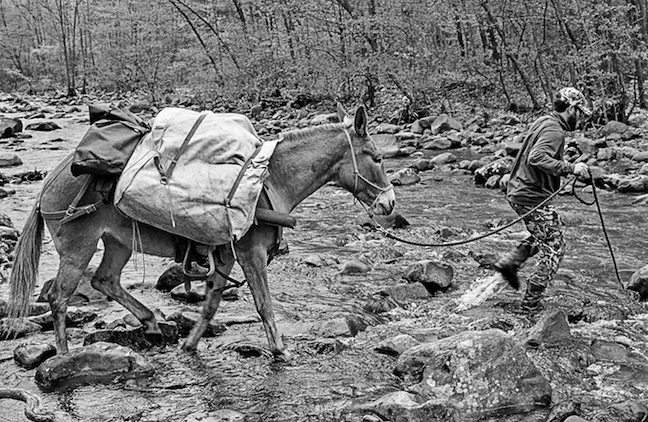
If you buy or train a mule, be sure to get the animal used to wild game before you need it to haul it out. (Photo by Clay Holcomb)
PACK-IN HUNTING WITH MULES
In the last year-and-a-half I’ve been training mules for use in hunting. Aside from the traditional aspects, which make it interesting, they’re extremely useful for traveling in deep and staying longer. Both of my mules are broke to ride, but I primarily use them to pack gear. In some of the larger WMAs and National Forests with walk-in-only hunting, a smart hunter could use a mule to pack in a week’s worth of gear and have a backcountry camp. This would eliminate travel time in and out of these hard-to-get-to areas, leaving you more time for hunting. Additionally, when you kill game, if you’ve got good mules, you can haul them out!
If you buy or train a mule, be sure to get the animal used to wild game before you need it to haul it out. I desensitized my mules using raccoon carcasses. Equine animals are naturally fearful of almost anything that’s new. You’ll need to get them accustomed to the smell of blood, hair and the odor of a wild animal before they’ll let you strap it to their back. There are a lot of good training videos on YouTube, or you can watch a video series on Carbon TV (Bear Horizon, Project: Hunting Mule) I produced about breaking a young mule for hunting in Arkansas.
The post Bowhunting Tips for Early Season Bucks appeared first on Game & Fish.

